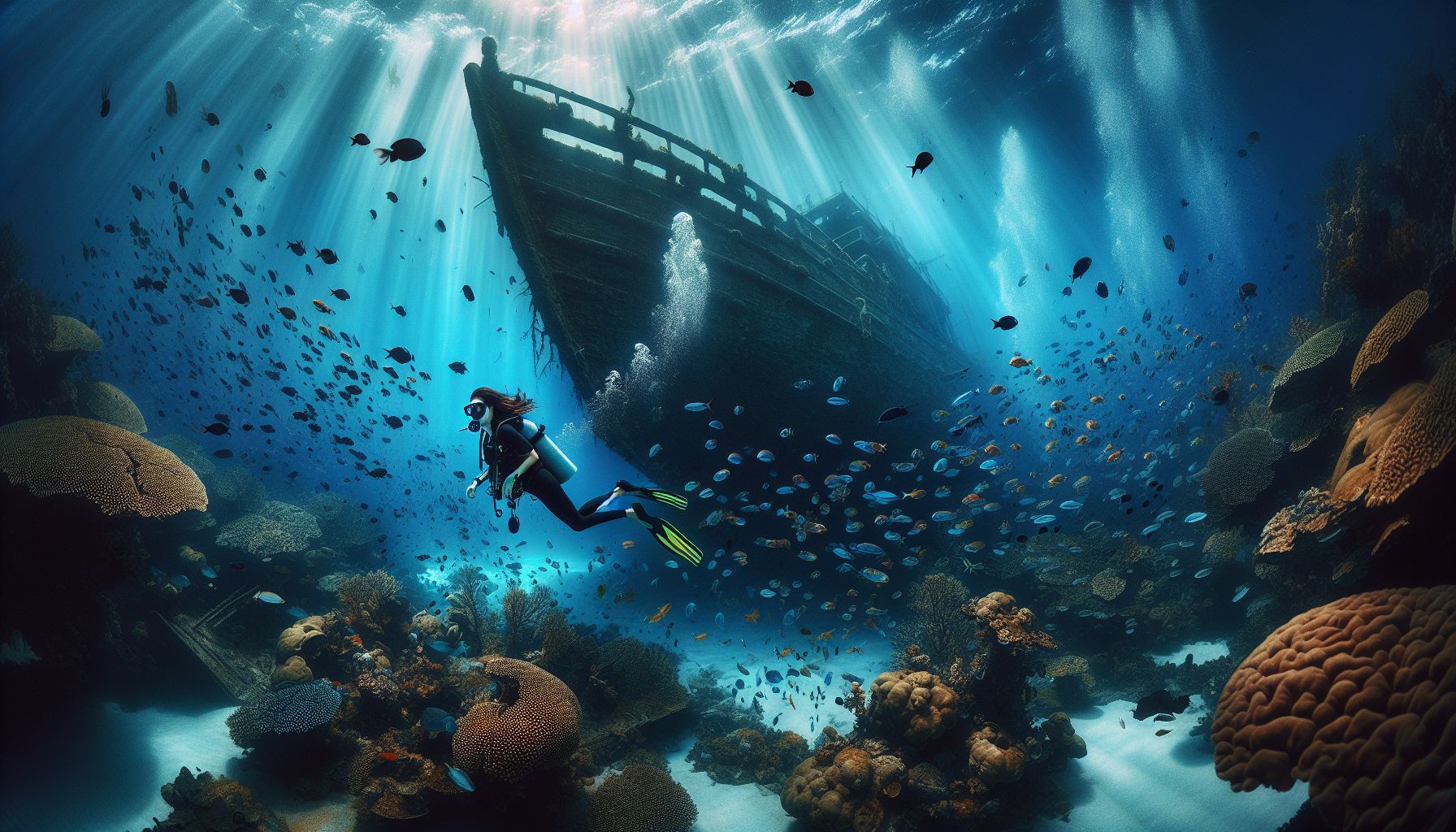Scuba diving is a captivating and exhilarating experience that opens up the mysterious world beneath the ocean’s surface to those who dare to explore it. With the ability to breathe underwater, scuba diving offers adventure seekers, wildlife enthusiasts, and underwater photographers the chance to encounter marine life up close and personal, to delve into sunken shipwrecks, and to admire the stunning formations of coral reefs. This comprehensive article will delve into the history, equipment, training, safety considerations, conservation, and the most remarkable scuba diving destinations around the globe.
The Origins of Scuba Diving
The concept of scuba diving originated long before the modern technology that allows us to explore the underwater world today. Early attempts at underwater breathing apparatus can be traced back to the 16th century. However, it wasn’t until the mid-20th century that scuba diving became more accessible, thanks to the development of the Aqua-Lung by Jacques-Yves Cousteau and Emile Gagnan in 1943. This revolutionary self-contained underwater breathing apparatus (SCUBA) allowed divers to swim freely without the encumbrance of surface-supplied air.
Scuba Diving Equipment Essentials
Scuba diving requires specialized equipment to ensure the safety and comfort of the diver. The basic items include:
- Diving Mask: Provides an air space in front of the eyes, enabling clear vision underwater.
- Snorkel: A breathing tube for surface swimming.
- Scuba Tank: Contains compressed air or a mix of gasses for breathing underwater.
- Regulator: Attaches to the scuba tank and delivers air when the diver inhales.
- Buoyancy Control Device (BCD): A vest that allows the diver to maintain neutral buoyancy.
- Fins: Aid in propulsion and movement through the water with minimal effort.
- Dive Computer: Monitors the diver’s depth, time underwater, and ascent rate, crucial for avoiding decompression sickness.
- Wetsuit or Drysuit: Provides thermal protection and helps maintain body temperature.
- Weight System: Helps to overcome the buoyancy of the wetsuit and the diver’s natural buoyancy.
- Accessories: Dive knife, compass, and underwater light.
Training and Certification
Before you can start scuba diving, proper training and certification through accredited organizations like PADI (Professional Association of Diving Instructors), NAUI (National Association of Underwater Instructors), or SSI (Scuba Schools International) are essential. The entry-level course typically includes:
– Academic Learning: Covers the basics of dive theory, equipment knowledge, and underwater communications.
– Confined Water Dives: Practicing skills in a controlled environment such as a swimming pool.
– Open Water Dives: Real-world diving experience under the supervision of a certified instructor.
Once certified, divers are encouraged to continue their education with advanced courses that focus on specific diving activities such as deep diving, night diving, or underwater navigation.
Safety Considerations
Scuba diving is generally a safe activity when performed correctly. The primary concerns include managing buoyancy, avoiding decompression sickness (the bends), and preventing equipment failures. Essential safety tips include:
– Never hold your breath: Breathing continuously is critical to preventing lung over-expansion injuries.
– Equalize your ears and sinuses: Prevent ear discomfort or injury by gently blowing through your nose against pinched nostrils.
– Monitor your air supply: Always keep an eye on your air gauge to avoid running out of air.
– Dive within your limits: Only dive in conditions and environments appropriate for your training and experience.
– Plan your dive and dive your plan: Coordinate with your dive buddy to agree on depth, duration, and safety procedures.
Conservation and Responsible Diving
As divers, we have a responsibility to protect the underwater environment. Following sustainable diving practices such as buoyancy control to prevent coral damage, not touching marine life, and respecting local regulations are vital. Many organizations, such as Project AWARE, are dedicated to marine conservation and offer programs for divers to get involved.
Top Scuba Diving Destinations
The world is filled with incredible scuba diving locations, each offering unique experiences. Some of the top destinations include:
- The Great Barrier Reef, Australia: The world’s largest coral reef system, home to a diverse range of marine life.
- The Red Sea, Egypt: Known for its clear waters, vibrant coral, and historic wrecks.
- The Blue Hole, Belize: A massive marine sinkhole that’s a hotspot for advanced divers.
- Galápagos Islands, Ecuador: Offers encounters with unique species like hammerhead sharks and marine iguanas.
Conclusion
Scuba diving is a thrilling endeavor that allows individuals to experience the marvels of the underwater realm. Whether you are embarking on your first training course or planning your next big dive trip, the world of scuba diving is full of possibilities and discoveries waiting below the water’s surface.
To embark on this underwater adventure, it’s important to prioritize safety and conservation as part of the diving experience. As we continue to explore and cherish the oceans, we must also ensure that we’re preserving them for future generations.
To learn more about scuba diving, consider visiting the following resources:
– PADI (Professional Association of Diving Instructors): https://www.padi.com
– NAUI (National Association of Underwater Instructors): https://www.naui.org
– Project AWARE (Aquatic World Awareness, Responsibility, and Education): https://www.projectaware.org
Whether you’re drawn to the tranquil beauty of coral reefs, the thrill of encountering marine wildlife, or the allure of exploring sunken ships, scuba diving offers an incredible experience for all. So gear up, dive in, and prepare to be amazed by the wonders of the underwater world.
